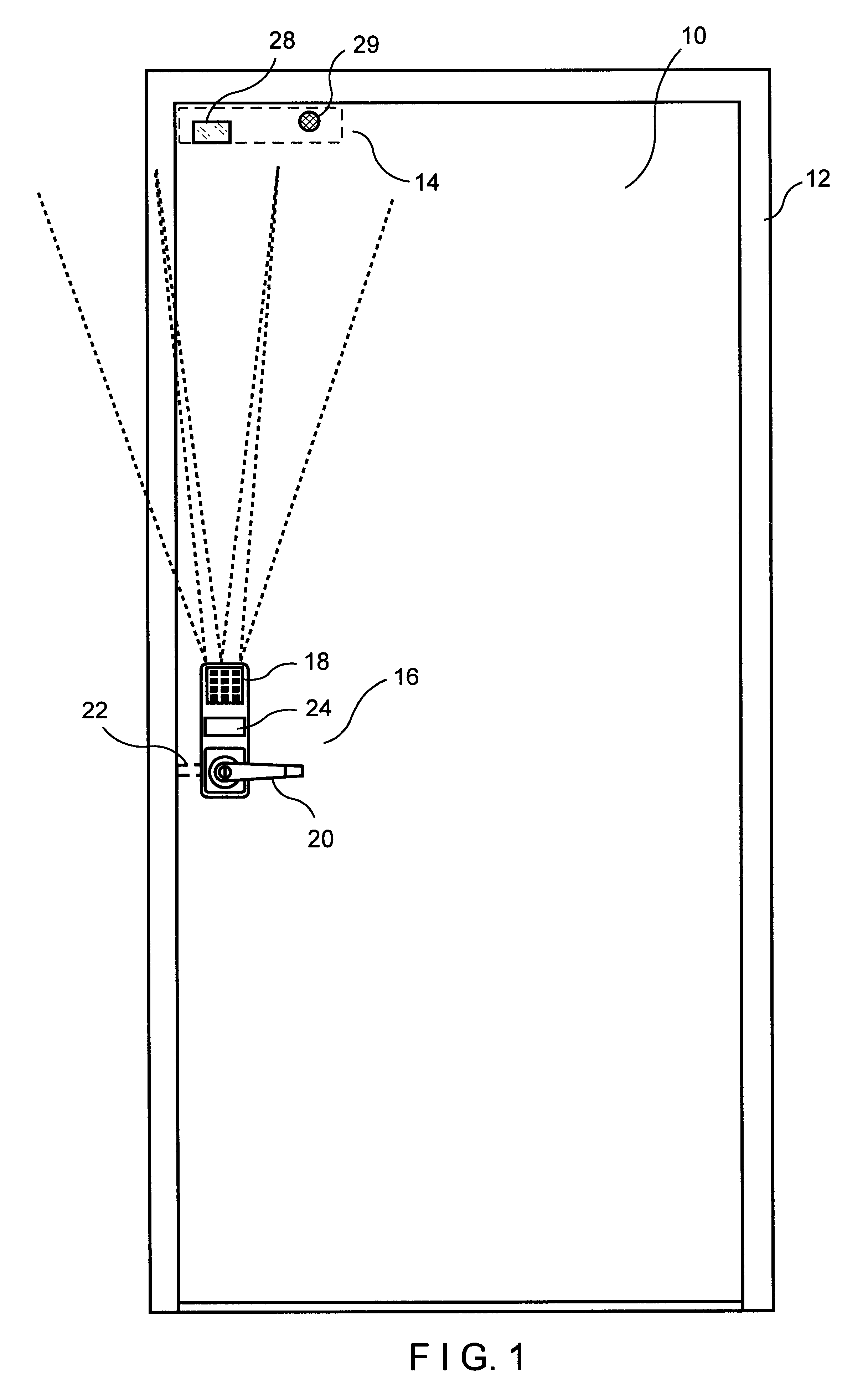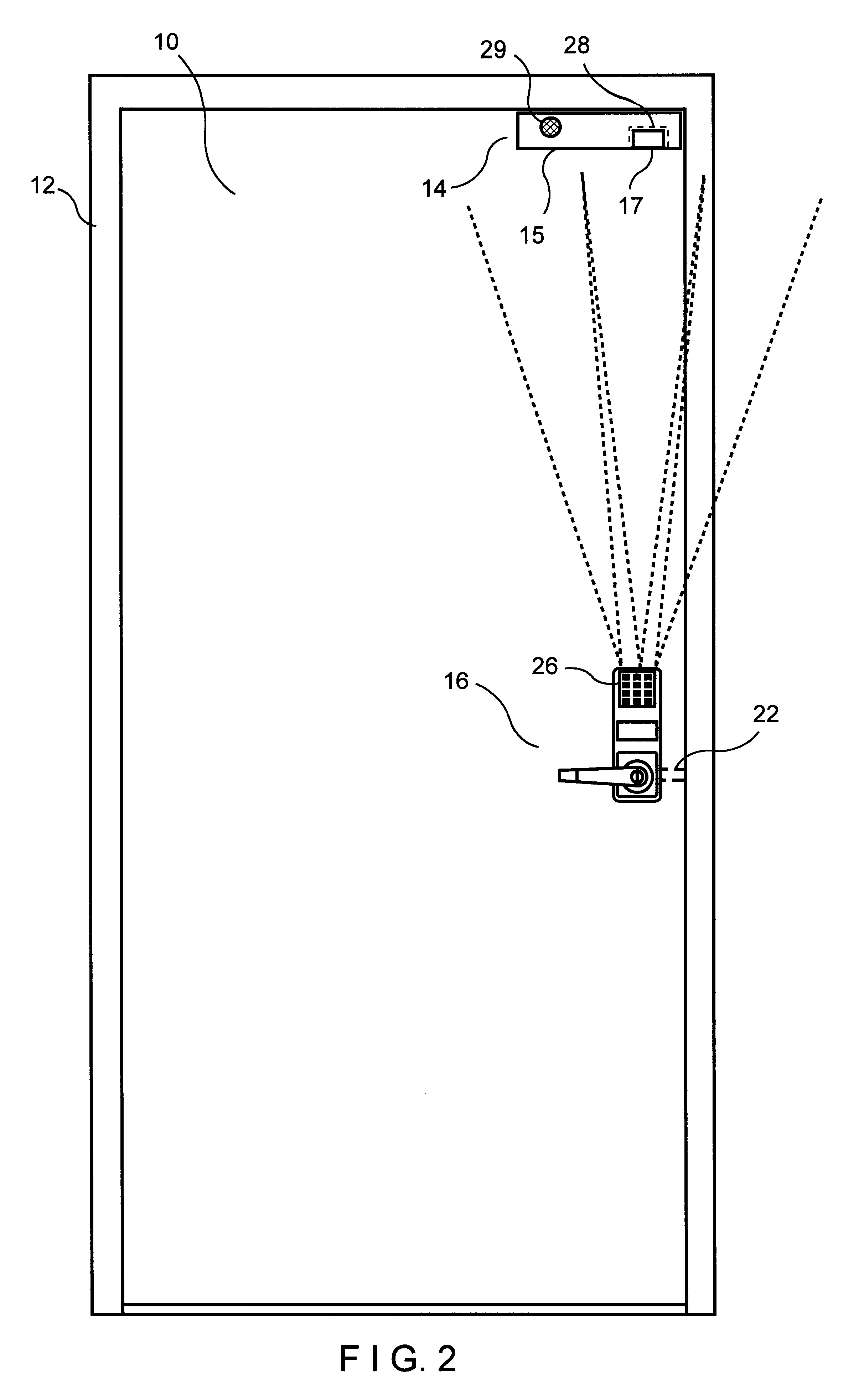Wireless magnetic lock control system
a control system and magnetic lock technology, applied in control systems, program control, testing/monitoring, etc., can solve problems such as easy tampering with wiring, improper connection or actual physical damage of doors, and difficult installation and time-consuming
- Summary
- Abstract
- Description
- Claims
- Application Information
AI Technical Summary
Benefits of technology
Problems solved by technology
Method used
Image
Examples
Embodiment Construction
Both FIG. 1 and FIG. 2 include a door 10, a door frame 12, a magnetic lock assembly 14, and a controlled deadlatch assembly 16. FIG. 1 represents the outside of door 10 whereas FIG. 2 represents the inside of door 10. Magnetic lock assembly 14 is shown in shadow in FIG. 1 since it is preferred in most applications to have magnetic lock assembly 14 installed on the inside (or secured side) of door 10 for security purposes. However, magnetic lock assembly 14 obviously can be attached to either side of door 10 and door frame 12.
Controlled deadlatch assembly 16, as depicted in FIG. 1 and FIG. 2, actually is a combination input control device and deadlatch / door handle apparatus. In the embodiment shown, a keypad 18 is incorporated as the input control device. If an acceptable combination is punched into keypad 18, a predetermined delay time will commence in which a user can turn a door handle 20 to release a deadlatch 22 and permit entry into the secured premises. Keypad 20 can be replac...
PUM
 Login to View More
Login to View More Abstract
Description
Claims
Application Information
 Login to View More
Login to View More - R&D
- Intellectual Property
- Life Sciences
- Materials
- Tech Scout
- Unparalleled Data Quality
- Higher Quality Content
- 60% Fewer Hallucinations
Browse by: Latest US Patents, China's latest patents, Technical Efficacy Thesaurus, Application Domain, Technology Topic, Popular Technical Reports.
© 2025 PatSnap. All rights reserved.Legal|Privacy policy|Modern Slavery Act Transparency Statement|Sitemap|About US| Contact US: help@patsnap.com



